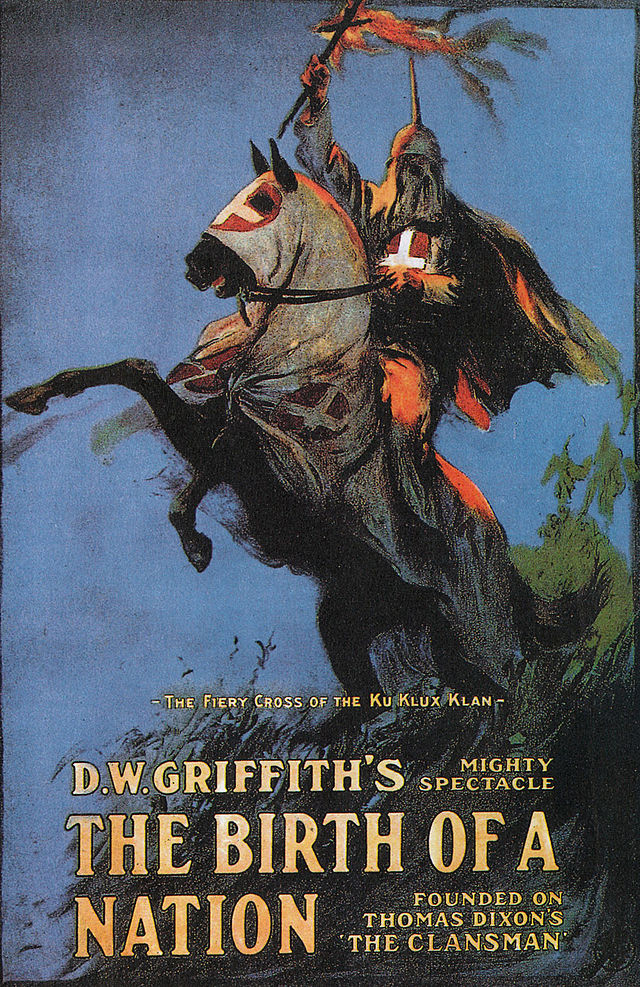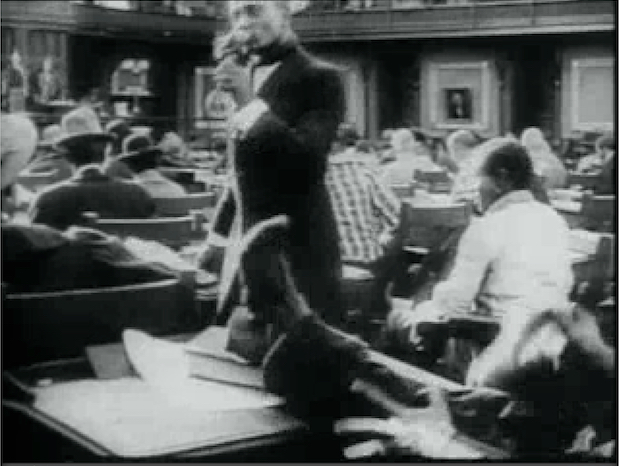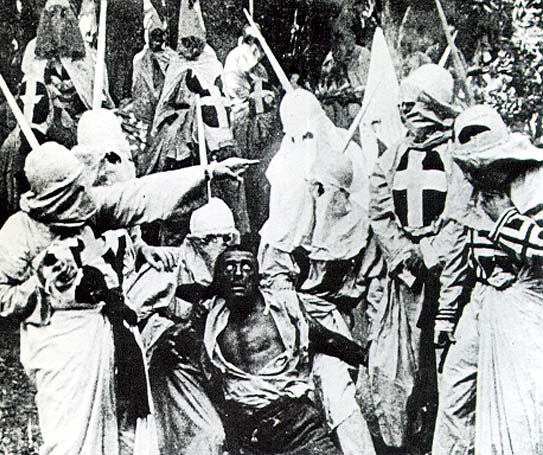
One hundred years ago this month, American movie-going audiences experienced a cinematic spectacular: D. W. Griffith’s Birth of a Nation was the first 12-reel film in movie history and the first movie to be screened at the White House where President Woodrow Wilson watched it. Wilson was so taken with the film that he enthused: “It’s like writing history with lightning.”
The history presented on the screen came from Thomas Dixon’s novel The Clansman published in 1905 - and it bears noting that the "history" it tells has been wholly discredited by several generations of American historians. Set during the Reconstruction era after the Civil War, The Clansman portrays the Ku Klux Klan (KKK) as an avenging force, hooded heroes saving the South from newly freed and empowered black citizens. For example, the African American Silas Lynch is a scheming, power-hungry, and morally corrupt figure who ultimately attempts to establish a “Black Empire” in the broken south. Protagonist Austin Stoneman’s mixed-race housekeeper, Lydia Brown, is a temptress and blight to the “great leader’s” moral fortitude with her own dangerous ambitions.

During Reconstruction black southerners enjoyed considerable electoral success at the local, state and even national levels. In the book and movie, however, black representatives in the South Carolina legislature are depicted drinking, lazing about barefoot, eating chicken, and cheering the passage of legislation that allows mixed-race marriage [image from film at right]. The depravity of the African American character Gus at seeking the attention of a white woman results in three deaths: Flora Cameron’s suicide in the protection of her own “honor,” a white townsman killed by Gus in the subsequent pursuit, and the lynching death of Gus after being hastily put to trial by the Ku Klux Klan.
Finally, the film depicts the perceived dangers of the black mob. The “crazed negroes” brought in to “overawe” the whites create chaos and disorder in Piedmont, while “helpless whites look on,” frozen in horror. Even Union soldiers in the film are shown recognizing the threat of the black mob in the climactic scene. When Dr. Cameron is besieged along with his daughter and others, he prepares to kill Margaret to save her from a worse fate. The black mob breaks out windows, rips doors off their hinges and stands ready to overwhelm the small group just as the Klan rides into the scene and saves the day.
 |
| Gus (portrayed by white actor Walter Long in blackface) is captured by hooded Klansmen. |
Dixon himself grew up in North Carolina during Reconstruction and several of his relatives joined the Klan. Likewise, Griffith’s father was a Confederate veteran. This shaped the way he characterized southern defeat and its societal impact. In the film, veterans, especially those who organized into the Ku Klux Klan, were working to control the black population and maintain white dominance.
 |
| An actor wears an authentic Confederate jacket, one of the surplus uniforms still available in 1915. |
While the “history” on display in Birth of a Nation is seen as a falsification today, it is also worth remembering that the film was controversial when it was released. The NAACP in particular objected to the film, tried to organize a nation-wide boycott of it, and staged demonstrations in Los Angeles and New York.
While Birth of a Nation remains an unarguable milestone in the history of film, the story it tells and the characters it draws seem like the relics of a long-ago era. Even so, the stereotyping of black people depicted in the movie and the irrational fear of black criminality that lies at the heart of the film’s emotional power make the film feel closer than many of us wish it did. As Birth of a Nation marks its 100th birthday, the Supreme Court heard arguments in a case deciding whether the state of Texas was required to put a Confederate flag on license plates when requested. The plaintiffs in the case are the Sons of Confederate Veterans.
